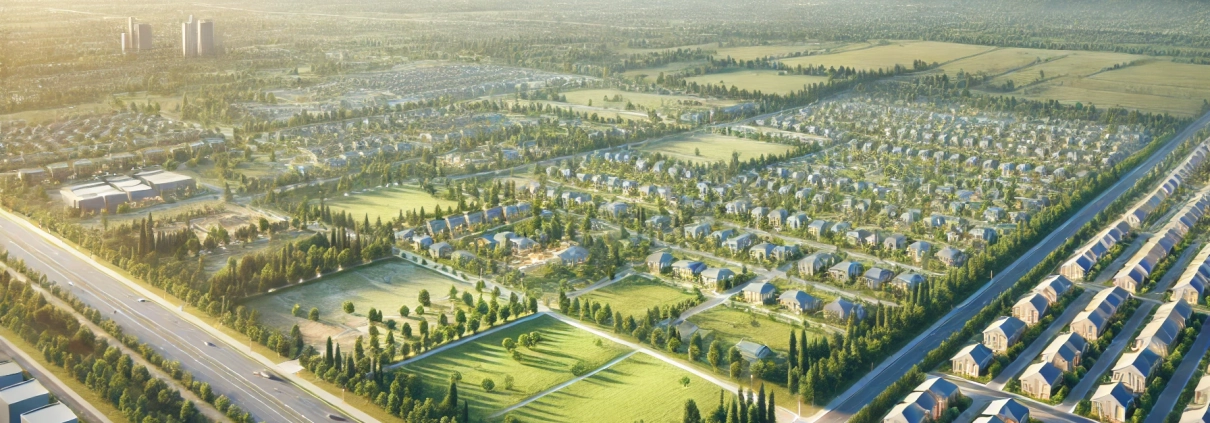Hectare
A unit of land that equals 10,000 square meters or 107,639 square feet.
Putting ‘Hectare’ in Context
Scenario
Andes Development Group, a real estate developer based in Santiago, Chile, is pursuing an opportunistic residential land development project in the suburban area of Pirque, located on the outskirts of Santiago. The project, named Valle Verde Residential Project, involves acquiring a 10-hectare (100,000 square meters) plot of undeveloped land for the purpose of subdividing it into single-family residential lots.
Details of the Project
The 10-hectare site was purchased for 2,500,000,000 CLP (Chilean Pesos), equivalent to approximately 250,000 CLP per square meter. Andes Development Group plans to subdivide the land into 100 individual lots of 1,000 square meters each, targeting upper-middle-income families seeking larger homes and outdoor space within commuting distance to Santiago.
Use of the Term ‘Hectare’
In this context, a hectare is a practical unit of measurement for describing the scale of the land being acquired and developed. The entire plot measures 10 hectares, which equals 100,000 square meters or approximately 1,076,391 square feet. Understanding the concept of a hectare helps stakeholders visualize the size of the project and the density of the proposed subdivision (10 lots per hectare).
Key Calculations
- Lot Price Target:
To achieve a 20% profit margin, Andes Development Group estimates that each lot must sell for at least 40,000,000 CLP.- Total Revenue Goal: 40,000,000 CLP × 100 lots = 4,000,000,000 CLP
- Total Costs (Land + Development): 2,500,000,000 CLP (land cost) + 800,000,000 CLP (infrastructure) = 3,300,000,000 CLP
- Profit Margin: (4,000,000,000 – 3,300,000,000) ÷ 4,000,000,000 = 17.5%
While slightly under the target, adjustments to lot pricing or cost management could help hit the desired margin.
- Density and Open Space:
With 10 lots per hectare, each measuring 1,000 square meters, 20% of the total area will remain as communal open space (green areas, roads, and infrastructure).- Development Footprint: 10 hectares × 0.8 = 8 hectares for lots
- Open Space: 10 hectares × 0.2 = 2 hectares for communal areas
Conclusion
The Valle Verde Residential Project highlights the utility of the hectare as a unit of measurement in land development, offering a clear and efficient way to describe the size of the project and allocate land for specific uses. It also demonstrates how understanding such units aids in financial planning and marketing within the real estate development process.
Frequently Asked Questions about the Hectare in Real Estate Development
What is a hectare?
A hectare is a unit of land that equals 10,000 square meters or approximately 107,639 square feet.
How was the hectare used in the Valle Verde project?
In the Valle Verde Residential Project, the entire plot measured 10 hectares (100,000 square meters). Andes Development Group used hectares to describe the total land area and to plan the subdivision into 100 individual lots of 1,000 square meters each.
How many lots per hectare were planned in Valle Verde?
The project planned for 10 lots per hectare, with each lot measuring 1,000 square meters.
How much did the land cost per square meter?
The land was purchased for 2,500,000,000 CLP, which equals 250,000 CLP per square meter.
What is the target lot sale price and projected revenue?
To reach a 20% profit margin, each lot must sell for at least 40,000,000 CLP.
Total Revenue Goal = 40,000,000 CLP × 100 lots = 4,000,000,000 CLP
What are the total development costs for Valle Verde?
Total costs include 2,500,000,000 CLP for land and 800,000,000 CLP for infrastructure, totaling 3,300,000,000 CLP.
What profit margin is currently projected?
The projected profit margin is 17.5%, calculated as:
(4,000,000,000 – 3,300,000,000) ÷ 4,000,000,000 = 17.5%
How much land is allocated for open space?
2 hectares, or 20% of the total area, will remain as communal open space for green areas, roads, and infrastructure.
Why is the hectare a useful unit in development projects?
A hectare offers a clear, efficient way to describe land size and allocation. It helps stakeholders visualize project scale and density, and supports financial planning and marketing.
Click here to get this CRE Glossary in an eBook (PDF) format.

